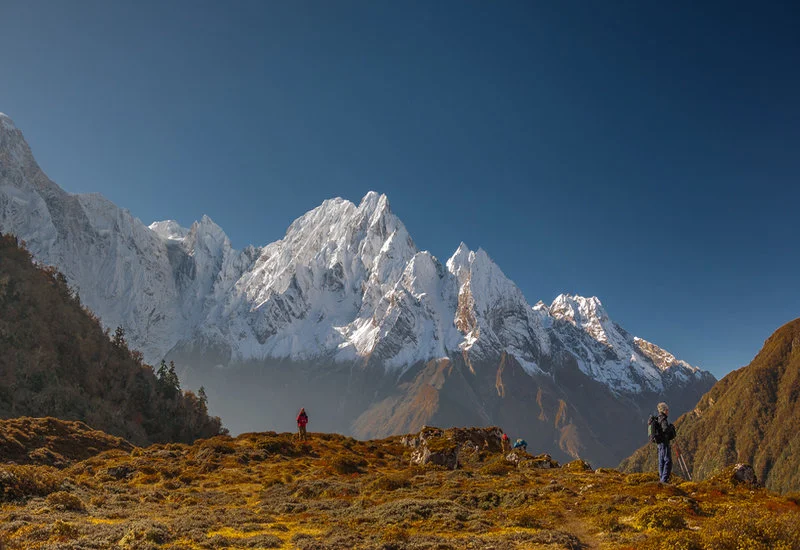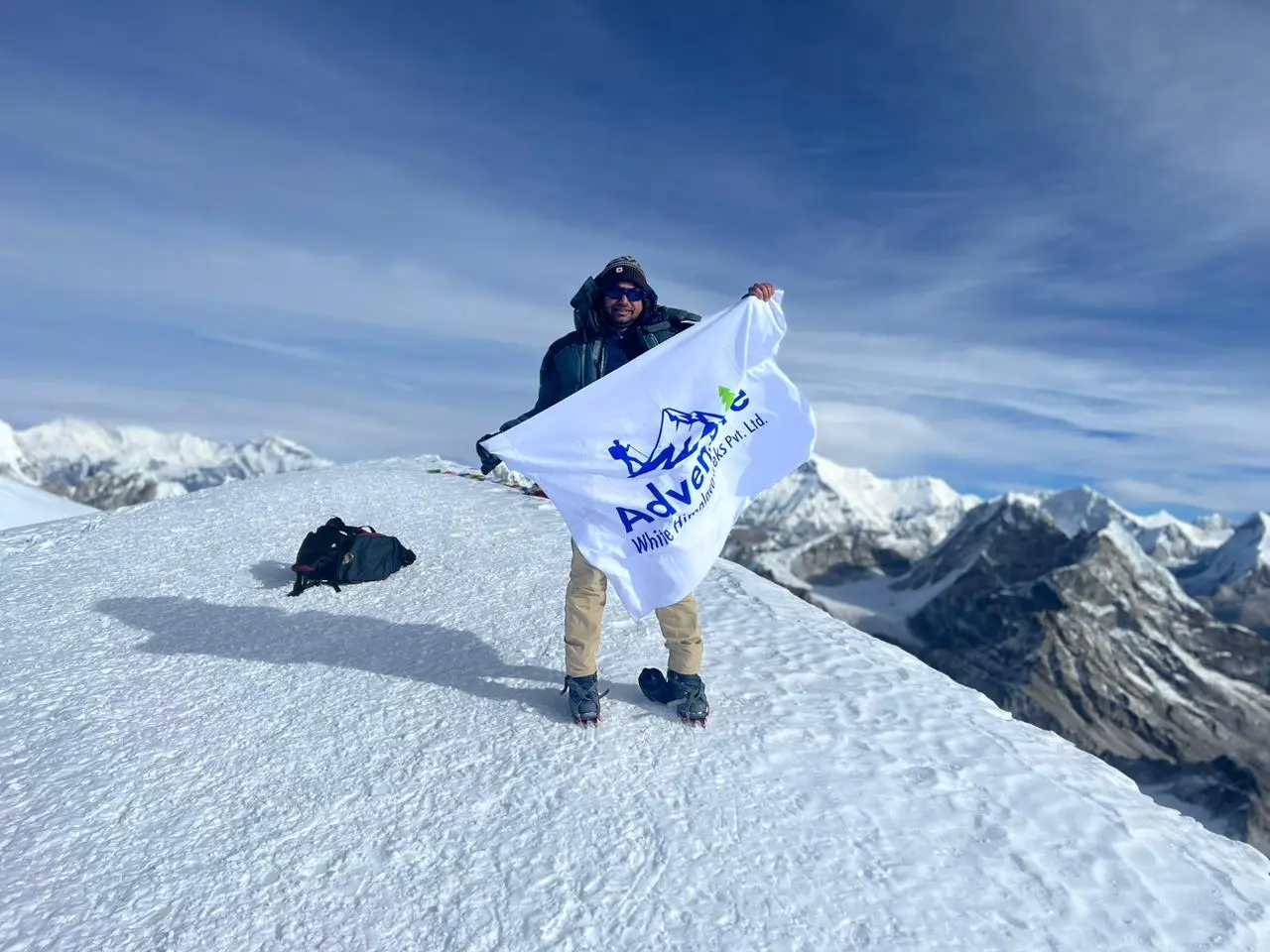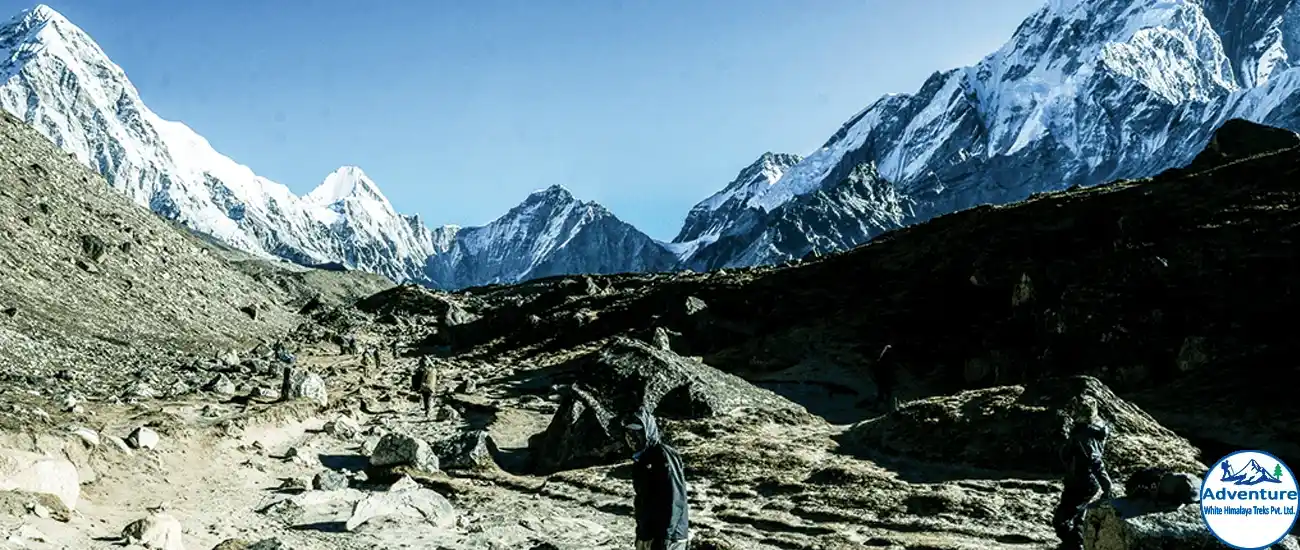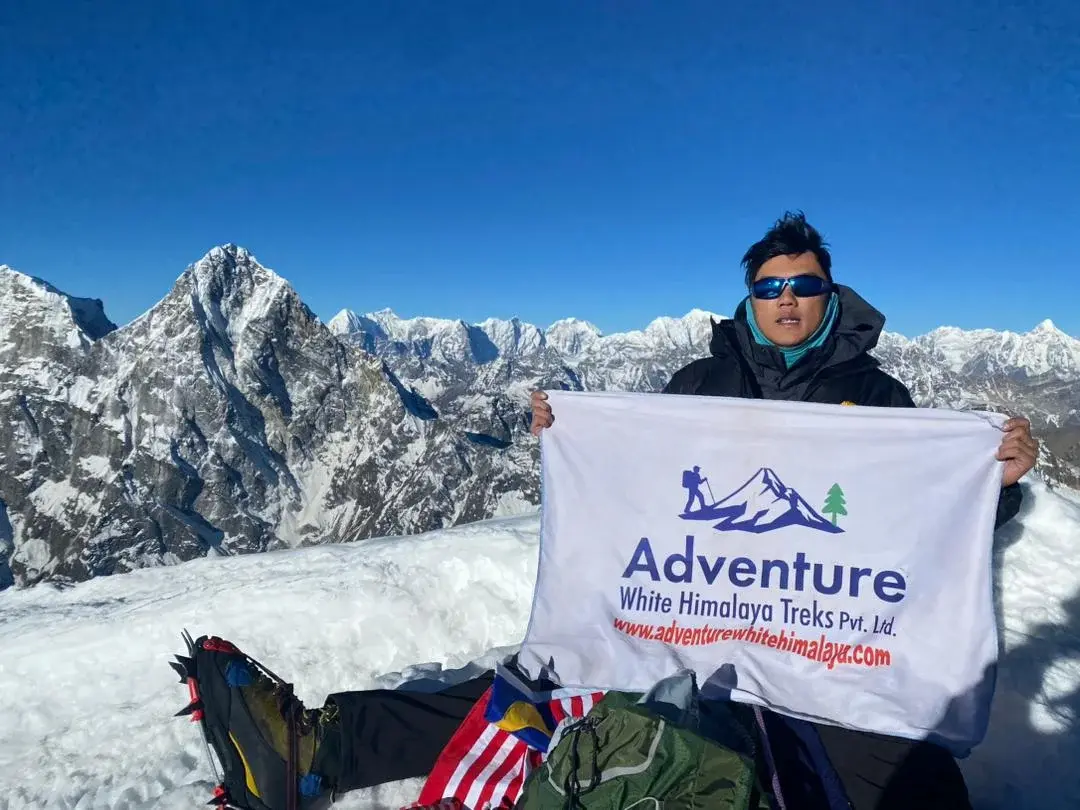Do you have any plans to visit Nepal?
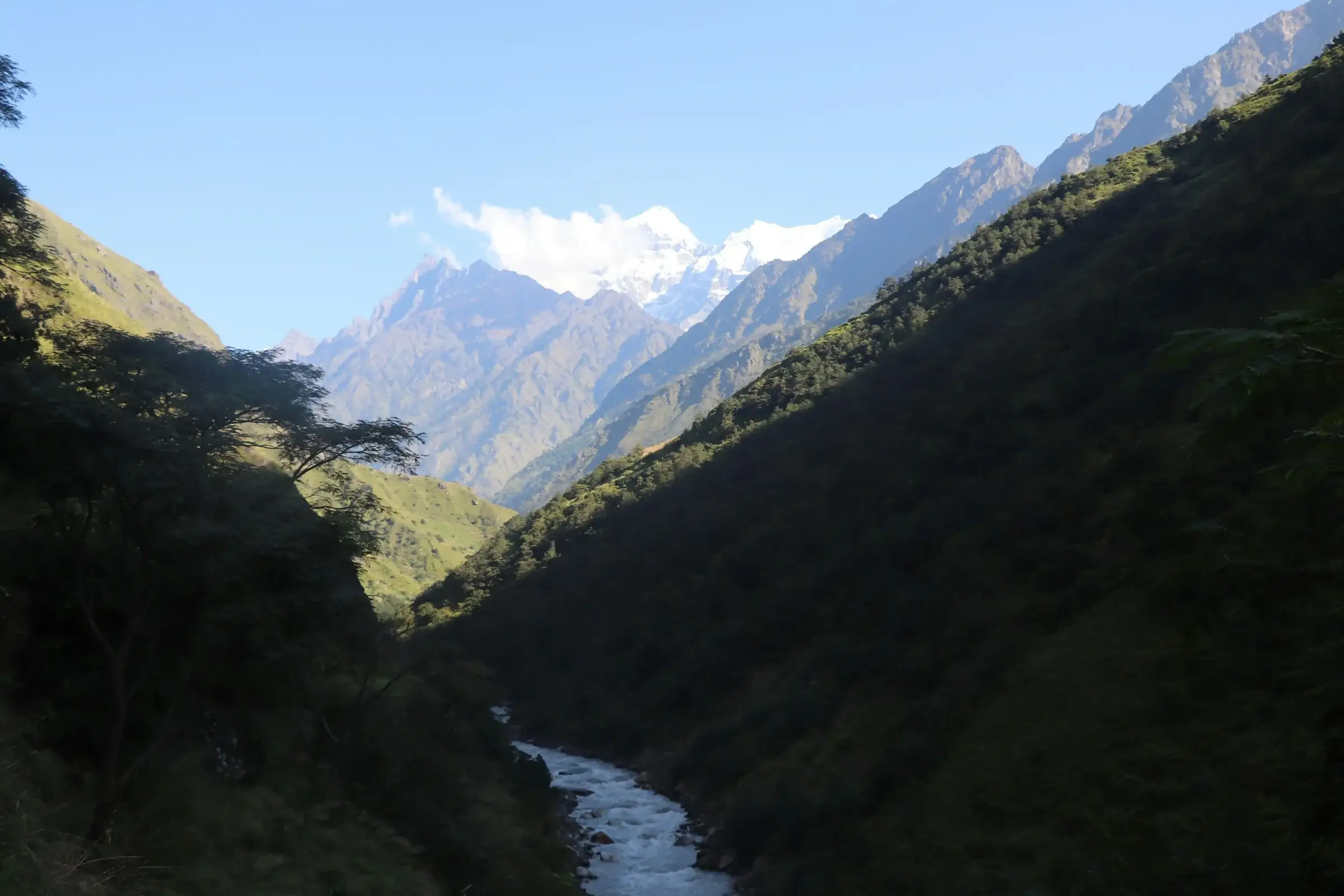
Best Time to Trek the Manaslu Circuit
A Seasonal Guide on Manaslu Circuit Trek Best Time
Manaslu Circuit trek is an exciting adventure through some of the most beautiful and remote areas of the Himalayas. This trek is special because of its amazing views, varied landscapes, and rich culture. It takes you around Mount Manaslu, the eighth-highest mountain in the world, offering a unique mix of nature and culture. You’ll see green valleys, terraced fields, towering snowy peaks, and peaceful glacial lakes along the way, making it a truly amazing experience.
But the Manaslu Circuit isn’t just about the scenery. It’s also a tough trek that challenges your strength and stamina. The paths can be steep and rocky, and you’ll need to cross high mountain passes like the Larkya La, which is 5,160 meters high. The altitude and weather can be unpredictable, adding to the difficulty.
Picking the right time to trek the Manaslu Circuit is really important. The best season will give you clear skies, comfortable temperatures, and safer trails. But if you choose the wrong season, you might face bad weather, landslides, avalanches, and poor visibility, which can spoil your experience. Whether you want to trek in the colorful spring, the lush summer, the clear autumn, or the tough winter, knowing the weather and trail conditions for each season will help you plan the perfect adventure.
By choosing the right time to go, you can enjoy the beauty and challenges of the Manaslu Circuit trek to the fullest, making sure your journey in the Nepalese Himalayas is both rewarding and unforgettable.
Manaslu circuit trek weather in Spring (March to May)
Spring is a magical & best time to trek the Manaslu Circuit. The region wakes up from winter, bursting with life. The weather is usually mild, making it a great time for trekking. During the day, it’s not too hot or too cold, so you can hike comfortably through the beautiful landscapes of the Himalayas. The air is fresh, and as you climb higher, you’ll see the scenery change right before your eyes.
One of the best parts of spring trekking season is seeing the flowers bloom. Rhododendrons, which are Nepal’s national flower, cover the hillsides in bright red, pink, and white. These colors look amazing against the backdrop of the tall, snow-covered mountains. The forests and fields at lower altitudes are lush and green, making your journey feel like walking through a picture. Plus, the trails aren’t as crowded as in the autumn, so you can enjoy the peace and quiet of nature.
Even though spring is mostly pleasant, you might encounter some snow at higher altitudes, especially near the Larkya La Pass. This snow can make the landscape look even more magical, but it can also make the trek harder. That’s why it’s important to have warm clothes, especially for the high-altitude areas where it can get very cold.
Spring is also a great time to see wildlife in the Manaslu region. As the snow melts, animals come out of their hiding spots, and if you’re lucky, you might see a snow leopard or a Himalayan blue sheep. Birdwatchers will also love this season because many birds are active, adding to the excitement of the trek.
Weather and Temperature in Spring
- Low altitudes: Daytime temperatures range from 15°C to 25°C (59°F to 77°F). Nights are cooler, so you might need a light jacket.
- Mid-altitudes: Daytime temperatures are between 5°C and 15°C (41°F to 59°F). Nights are chilly, so warm layers are necessary.
- High altitudes: Daytime temperatures range from -5°C to 5°C (23°F to 41°F). Nights are very cold, especially above 4,000 meters, where temperatures can drop below freezing.
Scenic Beauty in Spring
- Low altitudes: The trek starts with green forests, terraced fields, and traditional villages, giving you a glimpse into Nepalese rural life.
- Mid-altitude: As you climb, the hills are filled with blooming rhododendrons, and you’ll get stunning views of the surrounding mountains.
- High altitudes: Near the highest points, the scenery includes towering snow-capped peaks, shining glaciers, and calm alpine lakes, all under a clear blue sky.
Spring is a time of renewal and beauty on the Manaslu Circuit. It offers trekkers a chance to see the Himalayas in all their colorful glory while enjoying pleasant weather and fewer crowds.
Manaslu circuit trek weather in Summer (June to August)
Summer, known as the monsoon season, changes the Manaslu Circuit into a green paradise. The warm weather and heavy rains help the landscape grow lush and vibrant, with waterfalls and misty valleys all around. But trekking in summer has its pros and cons, so it’s best for those who are well-prepared and enjoy the quiet of off-season adventures.
Pros of Trekking in Summer
The biggest advantage of trekking in summer is the lush greenery. The trails are surrounded by thick forests, the terraced fields come to life, and wildflowers bloom everywhere. For nature lovers, it’s like walking through a magical world where every step reveals a new beautiful view. Plus, the warmer daytime temperatures make trekking at lower and mid-altitudes more comfortable, even though it might get humid.
Another benefit of trekking in summer is that it’s the off-peak season. This means fewer people on the trails, so you can have a more peaceful experience with nature. You’ll also have more chances to interact with locals and enjoy the calm of the villages.
Cons of Trekking in Summer
However, the monsoon rains can make trekking challenging. Heavy rain is common, especially in the afternoons, making the trails muddy, slippery, and slow to walk on. Waterproof gear, sturdy hiking boots, and quick-drying clothes are essential to stay comfortable.
There’s also a risk of landslides, especially in higher areas where the rain makes the ground unstable. River crossings, usually easy in drier seasons, can become dangerous as water levels rise and currents get stronger. It’s important to stay updated on trail conditions and be ready for delays or changes in your route.
Preparing for Monsoon Trekking
To make the most of a summer trek, preparation is key. You’ll need waterproof gear, like rain jackets, covers for your backpack, and water-resistant boots. Gaiters can protect your legs from mud, and trekking poles help you stay balanced on slippery paths. It’s also wise to wear lightweight, moisture-wicking clothes to stay comfortable in the humidity. Be aware of insects, especially mosquitoes, so pack repellent and consider wearing long sleeves and pants.
It’s smart to plan your daily treks to avoid the heaviest rains. Mornings are usually clearer, so start early to beat the afternoon downpours. Also, book your accommodations in advance because the rain can make some areas hard to reach, leading to delays.
Weather and Temperature in Summer
- Low altitudes: Daytime temperatures range from 20°C to 30°C (68°F to 86°F). Nights are warm and humid, which can be uncomfortable without good ventilation.
- Mid-altitudes: Daytime temperatures range from 10°C to 20°C (50°F to 68°F). Nights are cooler but manageable with light layers.
- High altitudes: Daytime temperatures are between 0°C and 10°C (32°F to 50°F). While it can be chilly, the warm summer air helps balance it out. Nights above 4,000 meters are still cold, so pack accordingly.
Scenic Beauty in Summer
- Low altitudes: The rain turns the lower regions into a vibrant patchwork of green forests, terraced fields, and thriving villages. The landscape feels alive with summer growth.
- Mid-altitudes: The hills and rhododendron forests contrast beautifully with the dark, rain-soaked clouds, creating a moody but stunning atmosphere. When the skies clear, the mountain views are breathtaking.
- High altitudes: Trekkers who brave the monsoon will see green valleys, cascading waterfalls, and expansive views of the Himalayas between rain showers. Mist and sunlight often create rainbows and unique photo opportunities.
Despite the challenges, trekking the Manaslu Circuit in summer offers a unique and rich experience. The dramatic landscapes, warmer temperatures, and quieter trails appeal to adventurous souls who don’t mind braving the rain for an intimate journey through one of Nepal’s most beautiful regions.
Manaslu circuit trek weather in autumn (September to November)
Autumn is the best time to trek the Manaslu Circuit, offering perfect conditions for an unforgettable journey through the Himalayas. The season is known for its stable weather, clear skies, and vibrant fall colors, making it the peak trekking season in Nepal. This time of year provides trekkers with breathtaking landscapes and comfortable temperatures, ensuring a smooth and enjoyable trek.
Advantages of Trekking in Autumn
The biggest advantage of trekking in autumn is the stable weather. The monsoon rains have passed, leaving behind clear skies that offer spectacular views of the surrounding mountains. The visibility is the best during this time, so you can fully appreciate the grandeur of peaks like Manaslu, Himalchuli, and Ngadi Chuli.
In addition to the great weather, autumn is also the season of vibrant fall foliage. The forests and valleys are painted in shades of red, orange, and yellow, creating a stunning contrast against the backdrop of snow-capped mountains. The beauty of the landscape during this time is unmatched, making it a photographer’s dream
Another benefit of trekking in autumn is the cooler temperatures at higher altitudes. While the days are warm and pleasant, the nights can be chilly, especially as you go above 4,000 meters. This coolness makes the trek more comfortable, helping you stay refreshed as you tackle the challenging terrain.
Even though it’s the peak season, the Manaslu Circuit is less crowded compared to other popular treks like the Annapurna Circuit or Everest Base Camp. This allows for a more peaceful experience, where you can truly connect with the natural beauty of the region and the rich culture of the local villages.
Weather and Temperature in Autumn
- Low altitudes: Daytime temperatures range from 15°C to 25°C (59°F to 77°F). The weather is generally pleasant, with cool nights that make for comfortable sleeping.
- Mid-altitudes: Daytime temperatures range from 5°C to 15°C (41°F to 59°F). The nights are chilly, so warm layers are essential.
- High altitudes: Daytime temperatures range from -5°C to 5°C (23°F to 41°F), and nights can be extremely cold, especially above 4,000 meters. Proper gear is crucial to staying warm and safe.
Scenic Beauty in Autumn
- Low altitudes: The lush forests and terraced fields stay green, while the traditional villages are lively with harvest season activities. The clear weather enhances the views, blending natural beauty with cultural experiences.
- Mid-altitude: As you climb, the landscape changes to rolling hills covered with rhododendron forests and other colorful trees. The autumn foliage adds a splash of color, making the trek even more beautiful.
- High altitudes: The higher you go, the more dramatic the scenery becomes. The vibrant fall foliage gradually gives way to snow-capped peaks, glaciers, and expansive valleys. The contrast between the autumn colors and the snowy mountains is breathtaking.
Autumn is also a time for cultural festivities in Nepal, with major festivals like Dashain and Tihar taking place. Trekking during this season allows you to experience these celebrations in the villages along the route, adding a rich cultural element to your adventure.
Overall, trekking the Manaslu Circuit in autumn is a near-perfect experience. The combination of stable weather, clear skies, stunning landscapes, and cultural richness makes this season the most popular and highly recommended for anyone looking to explore this part of the Himalayas.
Manaslu circuit trek weather in Winter (December to February)
Winter brings a different kind of beauty to the Manaslu Circuit, offering a tranquil and challenging trekking experience. The season is characterized by cold temperatures, snow-covered landscapes, and a quiet, serene atmosphere. Winter treks are for those who are well-prepared and looking for an adventure away from the crowds.
Pros of Trekking in Winter
One of the biggest advantages of trekking in winter is the solitude. The trails are much quieter than in other seasons, allowing you to enjoy the peace and stillness of the Himalayas. The snow-covered landscapes are breathtaking, with the mountains appearing even more majestic against the clear blue skies.
Another benefit of winter trekking is the unique beauty of the landscape. The entire region is transformed into a winter wonderland, with snow blanketing the forests, fields, and villages. The higher altitudes offer stunning views of frozen lakes, glaciers, and snow-capped peaks, creating a magical atmosphere.
Challenges of Trekking in Winter
However, winter trekking comes with its challenges. The temperatures can be extremely cold, especially at higher altitudes. Proper gear, including thermal layers, a good down jacket, and warm sleeping bags, is essential to stay warm and safe.
Snow and ice can also make the trails more difficult to navigate. The Larkya La Pass, in particular, can be challenging due to snow accumulation, making it harder to cross. It’s important to be prepared for delays or changes in the route and to have a guide who is experienced in winter trekking.
Another challenge is that many teahouses along the route may be closed during winter due to the cold and reduced number of trekkers. It’s important to plan your accommodation in advance and be prepared for basic facilities at some stops.
Weather and Temperature in Winter
- Low altitudes: Daytime temperatures range from 10°C to 15°C (50°F to 59°F). Nights are cold, with temperatures dropping below freezing.
- Mid-altitudes: Daytime temperatures range from 0°C to 10°C (32°F to 50°F). Nights are very cold, so warm clothing is essential.
- High altitudes: Daytime temperatures are between -10°C and 0°C (14°F to 32°F), and nights can be extremely cold, especially above 4,000 meters. Proper winter gear is crucial.
Scenic Beauty in Winter
- Low altitudes: The lower regions still have green forests and terraced fields, but the landscape is more subdued compared to other seasons. The villages are quieter, giving a sense of calm and solitude.
- Mid-altitude: The hills and forests are covered in snow, creating a serene and peaceful atmosphere. The clear winter skies offer stunning views of the surrounding mountains.
- High altitudes: The higher you go, the more dramatic the scenery becomes. The snow-capped peaks, glaciers, and frozen lakes create a winter wonderland that is both beautiful and challenging to navigate.
Winter is a time for trekkers who seek adventure and are prepared to face the challenges of cold weather and snow. The tranquility, solitude, and unique beauty of the winter landscape make it a rewarding experience for those who are up for the challenge.
Finding Manaslu Circuit Trek Best Time: Which Season is Right for You?
Choosing the best time to trek the Manaslu Circuit depends on what you like most—the weather, the number of people on the trail, and the kind of scenery you want to see. Here’s a simple guide to help you decide when to go.
Key Points for Each Season
- Spring (March to May): Perfect if you like mild weather, colorful blooming flowers, and fewer crowds. This season offers bright, lively treks with clear views of the mountains.
- Summer (June to August): Great for those who don’t mind the monsoon rains. You’ll see lush green landscapes and enjoy warmer temperatures, but be ready for muddy paths and possible landslides.
- Autumn (September to November): The most popular season because of the steady weather, clear skies, and beautiful fall colors. However, expect more people on the trail.
- Winter (December to February): Best for experienced trekkers who want quiet trails and stunning snowy views. It’s very cold, especially at higher altitudes, and some parts of the trek might be closed due to snow.
Manaslu Circuit Trek Weather Comparison Table: Advantages and Disadvantages by Season
| Season | Advantages | Disadvantages | Weather & Temperature |
| Spring | – Pleasant weather – Blooming flowers – Fewer crowds |
– Occasional snowfall at high altitudes | Low altitudes: 15°C to 25°C (59°F to 77°F) Mid-altitudes: 5°C to 15°C (41°F to 59°F) High altitudes: -5°C to 5°C (23°F to 41°F) |
| Summer | – Lush green landscapes – Warmer temperatures |
– Monsoon rains – Muddy trails – Risk of landslides |
Low altitudes: 20°C to 30°C (68°F to 86°F) Mid-altitudes: 10°C to 20°C (50°F to 68°F) High altitudes: 0°C to 10°C (32°F to 50°F) |
| Autumn | – Stable weather – Clear skies – Vibrant fall foliage |
– Cooler temperatures at high altitudes – More crowds |
Low altitudes: 15°C to 25°C (59°F to 77°F) Mid-altitudes: 5°C to 15°C (41°F to 59°F) High altitudes: -5°C to 5°C (23°F to 41°F) |
| Winter | – Fewer crowds – Stunning snow-covered landscapes |
– Extreme cold – Potential route closures |
Low altitudes: 5°C to 15°C (41°F to 59°F) Mid-altitudes: -5°C to 5°C (23°F to 41°F) High altitudes: -15°C to -5°C (5°F to 23°F) Nights can drop below -20°C (-4°F) |
Making Your Trek Just Right for You
When picking the best time to trek the Manaslu Circuit, think about these things:
- Weather: If you like mild weather, spring and autumn are perfect. If you love green landscapes and don’t mind some rain, summer might be your season. If you enjoy cold, snowy weather and want peace and quiet, winter is the best choice.
- Crowds: If you want fewer people around, winter or spring is better. Autumn is the busiest time, so expect more trekkers on the trail.
- Your Skills and Fitness: Winter trekking is for those with more experience because of the cold and snowy paths. Spring and autumn are good for trekkers of all levels. Summer needs extra care for wet and slippery trails.
The Manaslu Circuit trek best time is dependent on what you like, how fit you are, and how much trekking experience you have. Each season gives you a different experience, and with the right preparation, you can enjoy the trek any time of the year. Think about what you enjoy most in an adventure and pick the season that matches your preferences.


